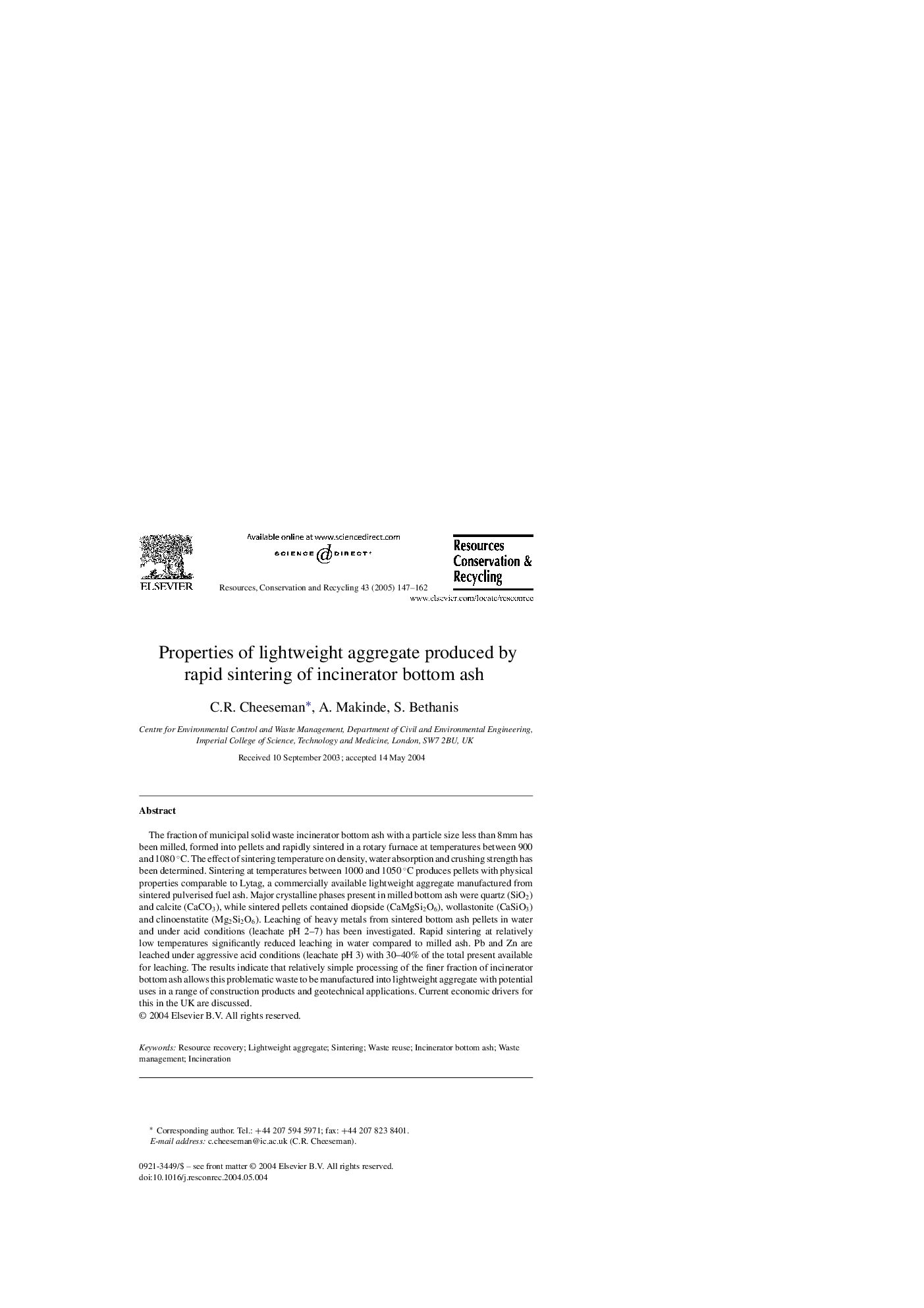| Article ID | Journal | Published Year | Pages | File Type |
|---|---|---|---|---|
| 10508219 | Resources, Conservation and Recycling | 2005 | 16 Pages |
Abstract
The fraction of municipal solid waste incinerator bottom ash with a particle size less than 8mm has been milled, formed into pellets and rapidly sintered in a rotary furnace at temperatures between 900 and 1080 °C. The effect of sintering temperature on density, water absorption and crushing strength has been determined. Sintering at temperatures between 1000 and 1050 °C produces pellets with physical properties comparable to Lytag, a commercially available lightweight aggregate manufactured from sintered pulverised fuel ash. Major crystalline phases present in milled bottom ash were quartz (SiO2) and calcite (CaCO3), while sintered pellets contained diopside (CaMgSi2O6), wollastonite (CaSiO3) and clinoenstatite (Mg2Si2O6). Leaching of heavy metals from sintered bottom ash pellets in water and under acid conditions (leachate pH 2-7) has been investigated. Rapid sintering at relatively low temperatures significantly reduced leaching in water compared to milled ash. Pb and Zn are leached under aggressive acid conditions (leachate pH 3) with 30-40% of the total present available for leaching. The results indicate that relatively simple processing of the finer fraction of incinerator bottom ash allows this problematic waste to be manufactured into lightweight aggregate with potential uses in a range of construction products and geotechnical applications. Current economic drivers for this in the UK are discussed.
Keywords
Related Topics
Physical Sciences and Engineering
Energy
Renewable Energy, Sustainability and the Environment
Authors
C.R. Cheeseman, A. Makinde, S. Bethanis,
